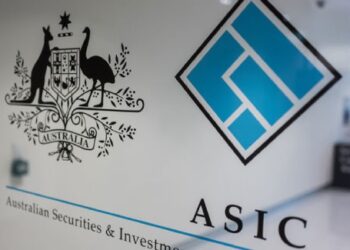Following recent industry commentary around the current cost squeeze at all levels of the advice value chain, Wealth02 CEO Shannon Bernasconi said that the demise of the vertically integrated institutional model of financial advice means independent financial advisers can, for the first time, access increased margins and a lower cost of advice for their clients.
“The next decade will be one where advisers have the opportunity to choose their own destiny, while also improving the efficiency and service they offer to clients, all at a lower cost,” Ms Bernasconi said.
“The platform and portfolio administration sector has become one of the most critical sectors in Australian wealth management. Platforms are generally viewed as the key productivity application within a financial planner’s office.
“However, the past decade has been dominated by vertical institutional models creating an environment with high barriers to entry where innovation has been stifled.
“The combination of findings of the royal commission and a continuously changing regulatory environment has seen the incumbents pushing resources into compliance rather than innovation.”
Ms Bernasconi said some institutions have exhibited no real appetite to adopt or realise the benefits of modern technology and advisers and their clients forced to use these laggard platforms have suffered.
“Others have engaged global software solutions to support new platform offerings; however, these offerings have not been focused on advisers’ needs. Instead, other revenue bias features have diverted the attention of these institutions. As a result, advisers’ needs — and ultimately their clients’ needs — have been sidelined,” she said.
“At the same time, legacy platforms haven’t kept up with the latest developments in technology, leading to a higher cost of operation that is often recouped through hidden or layered fees.”
With platform fees under continuous pressure, Ms Bernasconi believes that achieving economies of scale is critical, especially if most of the platform costs are fixed.
“The industry is likely to be characterised by increasing competition, as platforms try to capture share and scale. However, only those with newer technology and operational models can thrive in the lower-margin environment,” she said.
“However, following the exit of the banks from wealth management, many financial advisers are now free to choose their own administration platform, resulting in the practice and their clients benefiting from the more modern digital engagement and non-conflicted fee models available from non-bank-aligned specialist platform providers.”
WealthO2 executive director Darren Pettiona echoed a similar sentiment, noting that the advice industry is at a crossroads.
“The demise of the historical institutional dealer group model has changed the industry’s narrative,” he said.
“Instead, a shift to self-licensing and boutique dealer groups has seen advisers reassess their platform and technology solution, unconstrained by dealer group mandates. This, coupled with new technologies, is allowing for a new era of innovation for the advice industry.
“Independent financial advisers are seeking a flexible technology solution that offers a sophisticated level of client engagement. Most importantly, they are looking for a service that offers transparent pricing aligned to their own fee-for-service model. The days of platforms being able to clip the ticket on MERs and charge shelf-space fees are numbered.
“These fee practices are unsustainable in the current regulatory environment, and it will be the independent financial advisers and their clients who benefit from their demise.”
Mr Pettiona predicts the concept of “naked pricing” will become the norm in the platform space.
“The concept of naked pricing strips out fees exchanged between third parties in the value chain of advice and discloses only those fees payable by a client on a transparent basis, void of revenue bias or conflict,” he said.
Examples of fees that are exchanged between third parties in the value chain include badged platforms, shelf platform administration/SMA fees, cash platform fees, and platform in-house product costs.
“Naked pricing effectively removes all of these hidden and conflicted fees, resulting in a margin shift from the platform and product provider to the adviser, producing higher advice practice profits, and helping to lower the cost of advice to clients,” Mr Pettiona added.
“Inevitably, this empowers advisers to deliver advice and services to their clients that genuinely meet clients’ best interest.”


